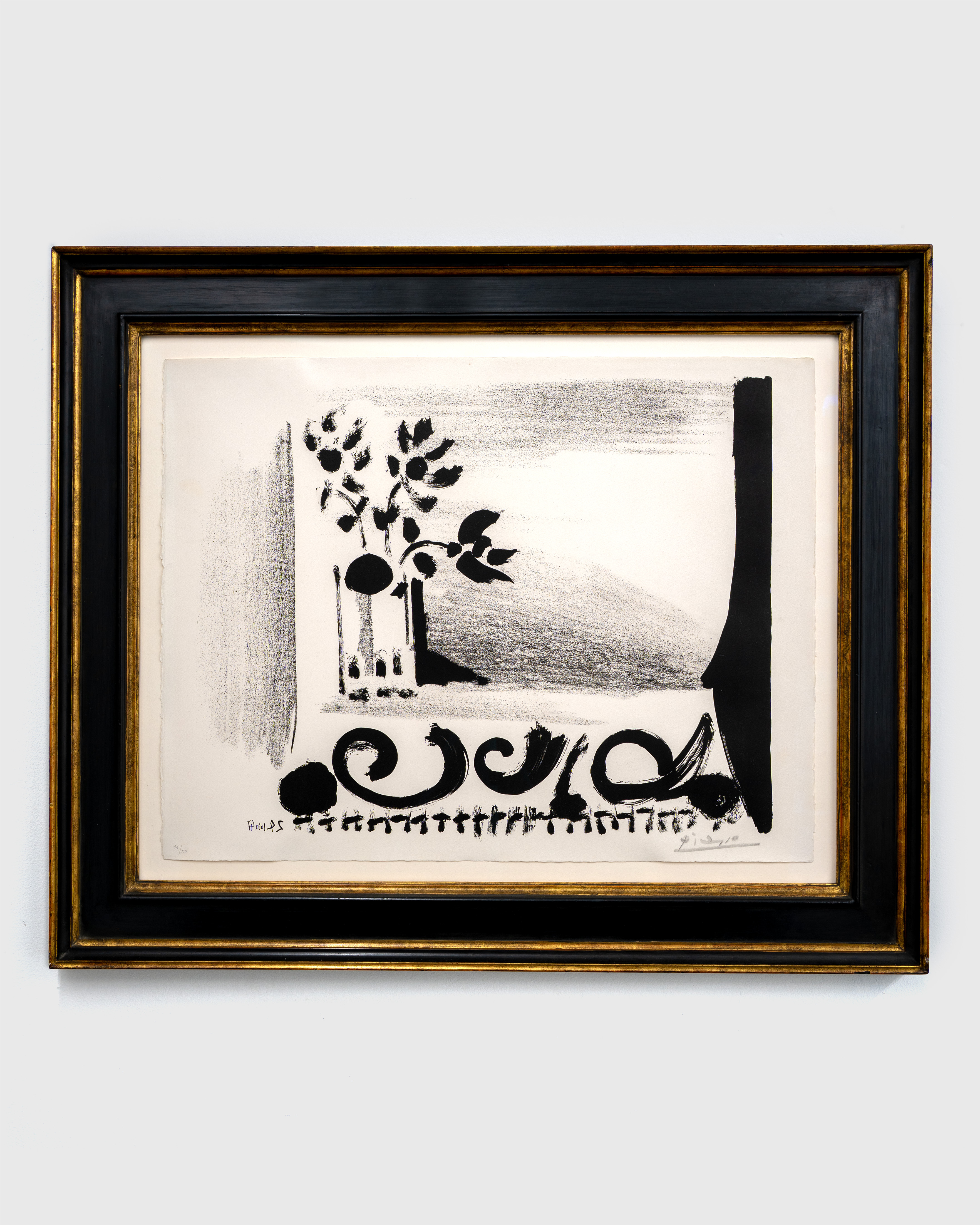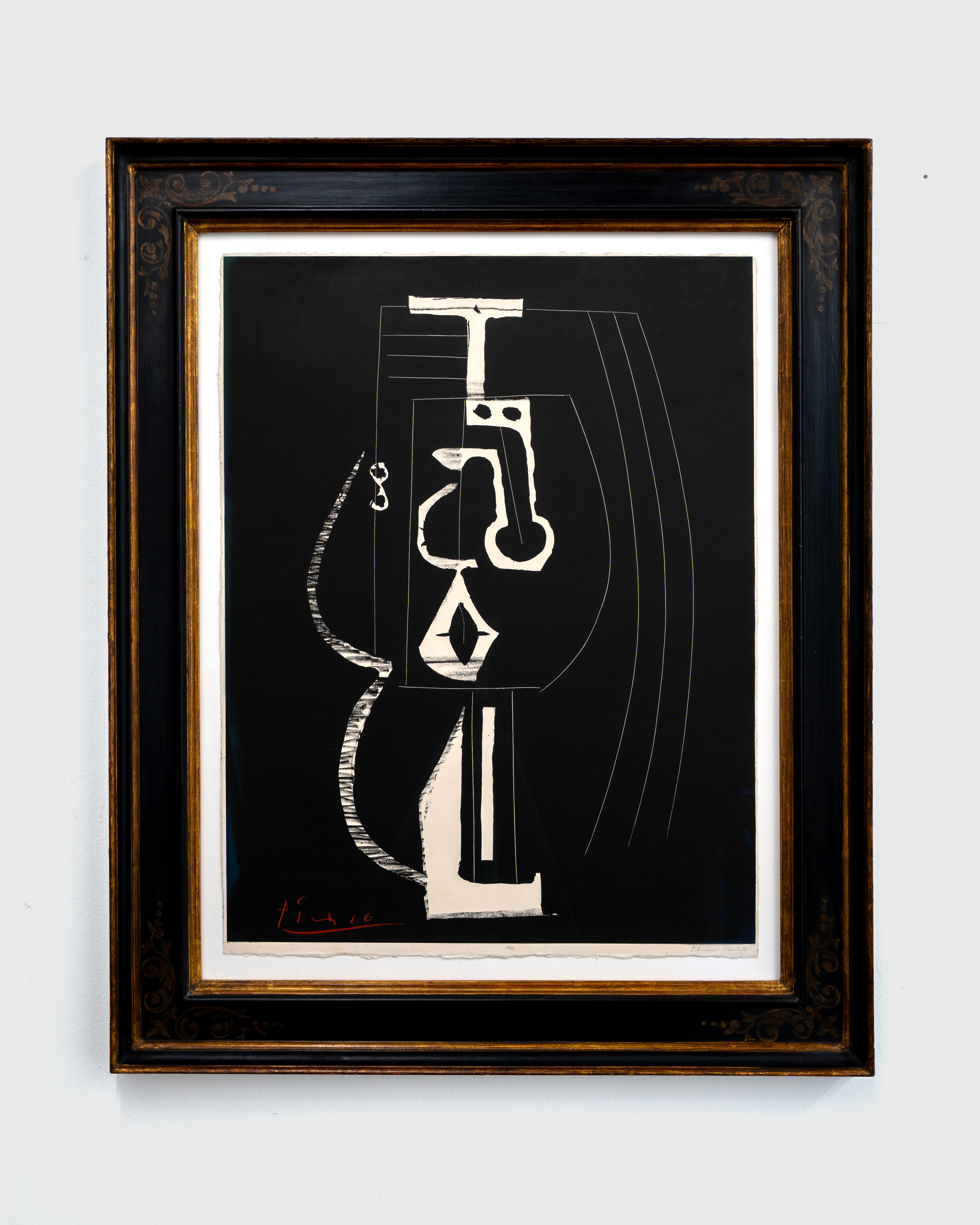Pablo Picasso (b. 1881, Málaga, Spain; d. 1973, Mougins, France), the son of academic painter José Ruiz Blasco, displayed artistic talent from an early age. He studied at the Fine Arts School in La Coruña and later at La Lonja Art Academy in Barcelona, where he frequented Els Quatre Gats, a meeting place for artists and intellectuals that shaped his early development. In 1901, Picasso held his first Paris exhibition at Galerie Vollard. Moving permanently to Paris in 1904, he settled in the Bateau-Lavoir studio and formed close friendships with Guillaume Apollinaire and Gertrude Stein. Over the following decades, his practice evolved through distinct and groundbreaking phases — from the Blue and Rose Periods to the birth of Cubism, and later to explorations of Neoclassicism and Surrealism.
The gallery’s focus lies primarily on Picasso’s lithographs from the late 1940s, a formative period that marked his collaboration with Fernand Mourlot in Paris. At Mourlot’s celebrated print studio, Picasso explored lithography with the same inventiveness that had defined his painting and sculpture. His early experiments soon gave way to a mastery of the medium, using crayons, tusche washes, and multiple stones to achieve unprecedented tonal variation and complexity. The resulting works — intimate depictions of lovers, doves, and still lifes — capture both the immediacy of gesture and the warmth of human connection that characterize this pivotal chapter in his graphic oeuvre.
Another important area of focus is Picasso’s etchings from the 1960s, created in close collaboration with Aldo and Piero Crommelynck. Working from his studio in Mougins, Picasso produced some of the most ambitious print cycles of his career, including the 347 Series (1968) and Suite 156 (1971). These late etchings display a remarkable vitality and technical brilliance, weaving together themes of art, eroticism, and mortality. They stand as a testament to Picasso’s lifelong curiosity and his ability to continually reinvent the language of printmaking.
Picasso’s artistic legacy remains central to the story of modern art and continues to be celebrated in major international exhibitions. In recent years, significant retrospectives have been presented at the Musée Picasso, Paris; Museo Reina Sofía, Madrid; Tate Modern, London; and the Metropolitan Museum of Art, New York. The international Picasso Celebration 1973–2023 marked the 50th anniversary of his passing with more than fifty exhibitions across Europe and the United States, reaffirming his enduring influence and the continued relevance of his work today










